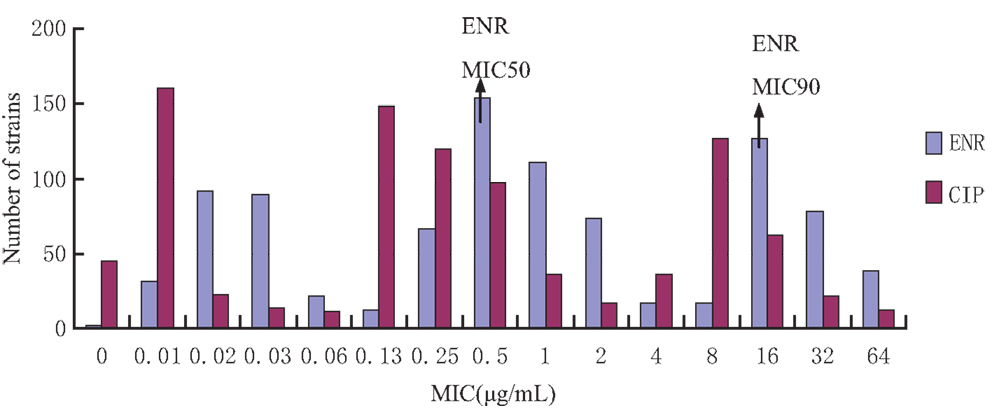

Staphylococcus (including penicillinase-producing and methicillin-resistant strains).It has antibacterial activity against a broad spectrum of Gram-negative and Gram-positive bacteria. It is available as a generic medication.Īctivity and susceptibility data Įnrofloxacin is a synthetic antibacterial agent from the class of the fluoroquinolone carboxylic acid derivatives. Enrofloxacin is available as a fixed-dose combination medication with silver sulfadiazine for the treatment of canine otitis externa. In September 2005, the FDA withdrew approval of enrofloxacin for use in water to treat flocks of poultry, as the practice was noted to promote the evolution of fluoroquinolone-resistant strains of the bacterium Campylobacter, a human pathogen. Enrofloxacin is partially deethylated by CYP450 into the active metabolite ciprofloxacin, which is also a fluoroquinolone antibiotic. Enrofloxacin has demonstrated a significant post-antibiotic effect for both Gram-negative and Gram-positive bacteria and is active in both stationary and growth phases of bacterial replication. The bactericidal activity of enrofloxacin is concentration-dependent, with susceptible bacteria cell death occurring within 20–30 minutes of exposure. There have been no side effects reported in cats.Enrofloxacin, sold under the brand name Baytril, among others, is a fluoroquinolone antibiotic used for the treatment of animals. What are the potential side effects of Enrofloxacin?Īlthough rare, some adverse reactions have been anorexia, diarrhea, vomiting, elevated liver enzymes, ataxia, seizures, depression, lethargy, and nervousness. The dose should be continued for at least 2-3 days beyond cessation of clinical signs, to a maximum of 30 days. Give either as a single dose or divided into 2 equal daily doses administered at 12 hour intervals. For Cats: Administer orally at a rate to provide 5 mg/kg (2.27 mg/lb) of body weight. For Dogs: Administer orally at a rate to provide 5-20 mg/kg (2.27 to 9.07 mg/lb) of body weight. Pets that receive dosage at the upper end of the dose range should be carefully monitored for clinical signs that may include inappetance, depression, and vomiting. How should Enrofloxacin be given?Įnrofloxacin should be administered orally to cats and dogs for the treatment of susceptible bacterial pathogens. In cats, such products should be used with caution due to reported adverse affects on the retina. Quinolones have also been associated with cartilage erosions and weight-bearing joints. In rare instances quinolones have been associated with central nervous system stimulation which may lead to convulsive seizures. Quinolone-class drugs should be used with caution in pets with known or suspected central nervous system disorders. Tell your veterinarian if your pet has or may have any central nervous system disorders. What should I discuss with my veterinarian before giving Enrofloxacin to my pet? Brand Name:Įnrofloxacin What is the most important thing I should know about Enrofloxacin?Įnrofloxacin is a a prescription medication used for the treatment of susceptible bacterial pathogens. Safety in breeding or pregnant cats has not been established. Do not exceed 5 mg/kg of body weight per day in cats. In rare instances, use of this product in cats has been associated with retinal toxicity. Fluoroquinolones interfere with bacterial DNA metabolism to kill the bacteria. For:Įnrofloxacin is a fluoroquinolone antibiotic. Enrofloxacin is sold per tablet and requires a prescription from your veterinarian. Enrofloxacin is the generic equivalent to Baytril and comes in a tasty chewable tablet, which most pets love. Enrofloxacin is used in the treatment of many types of bacterial infections including urinary tract, skin, prostate, GI tract, liver, and lungs.


 0 kommentar(er)
0 kommentar(er)
